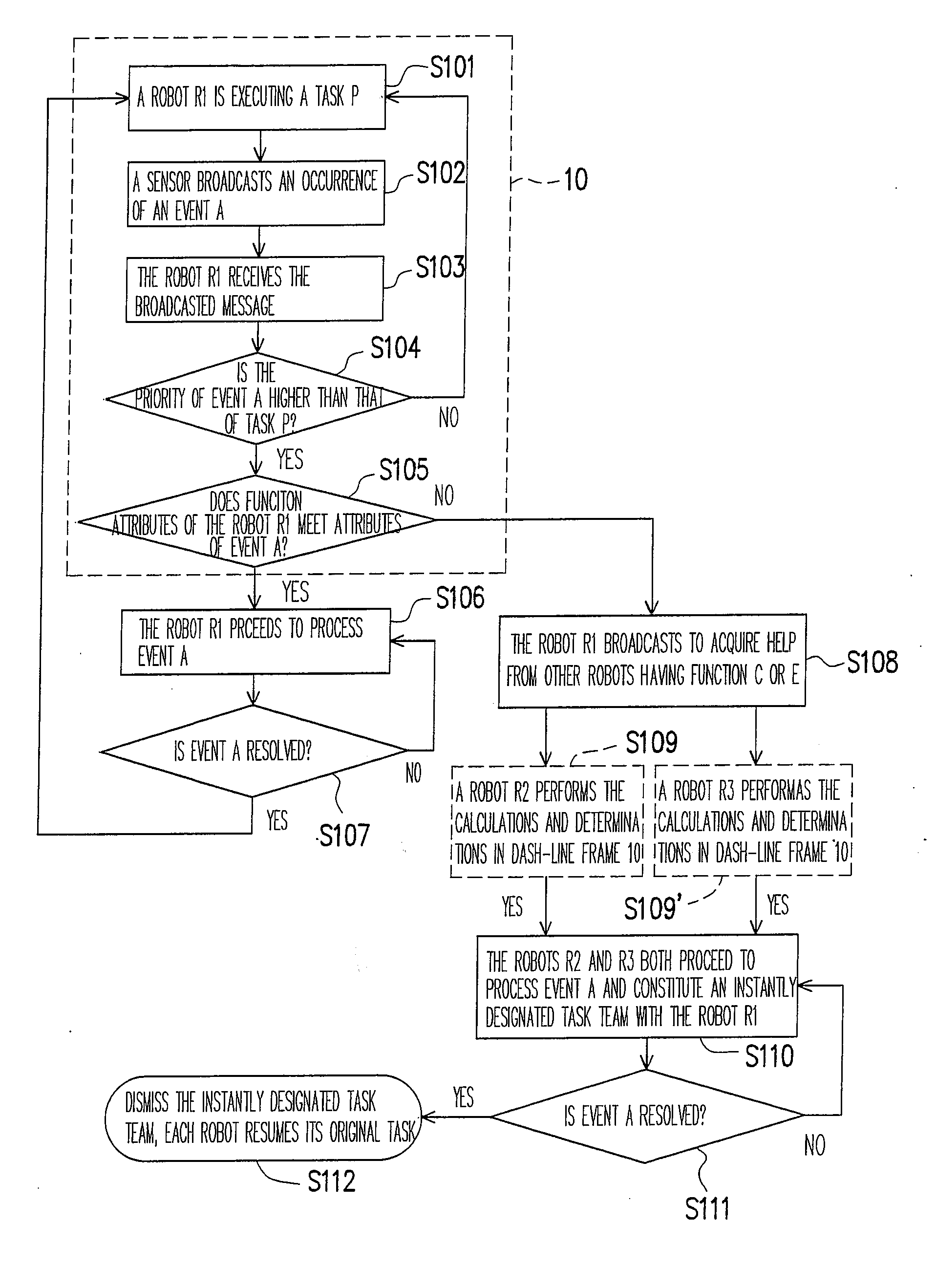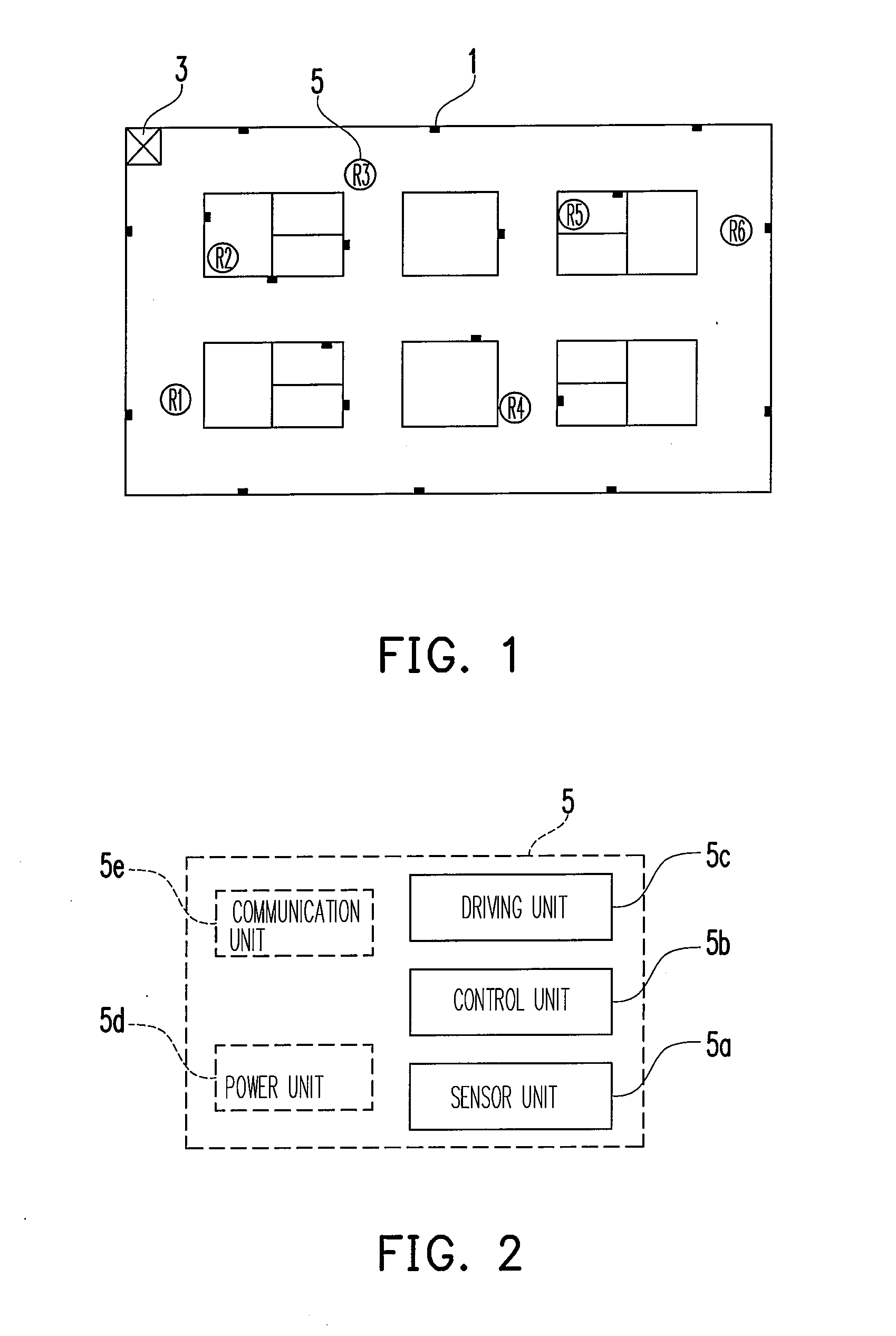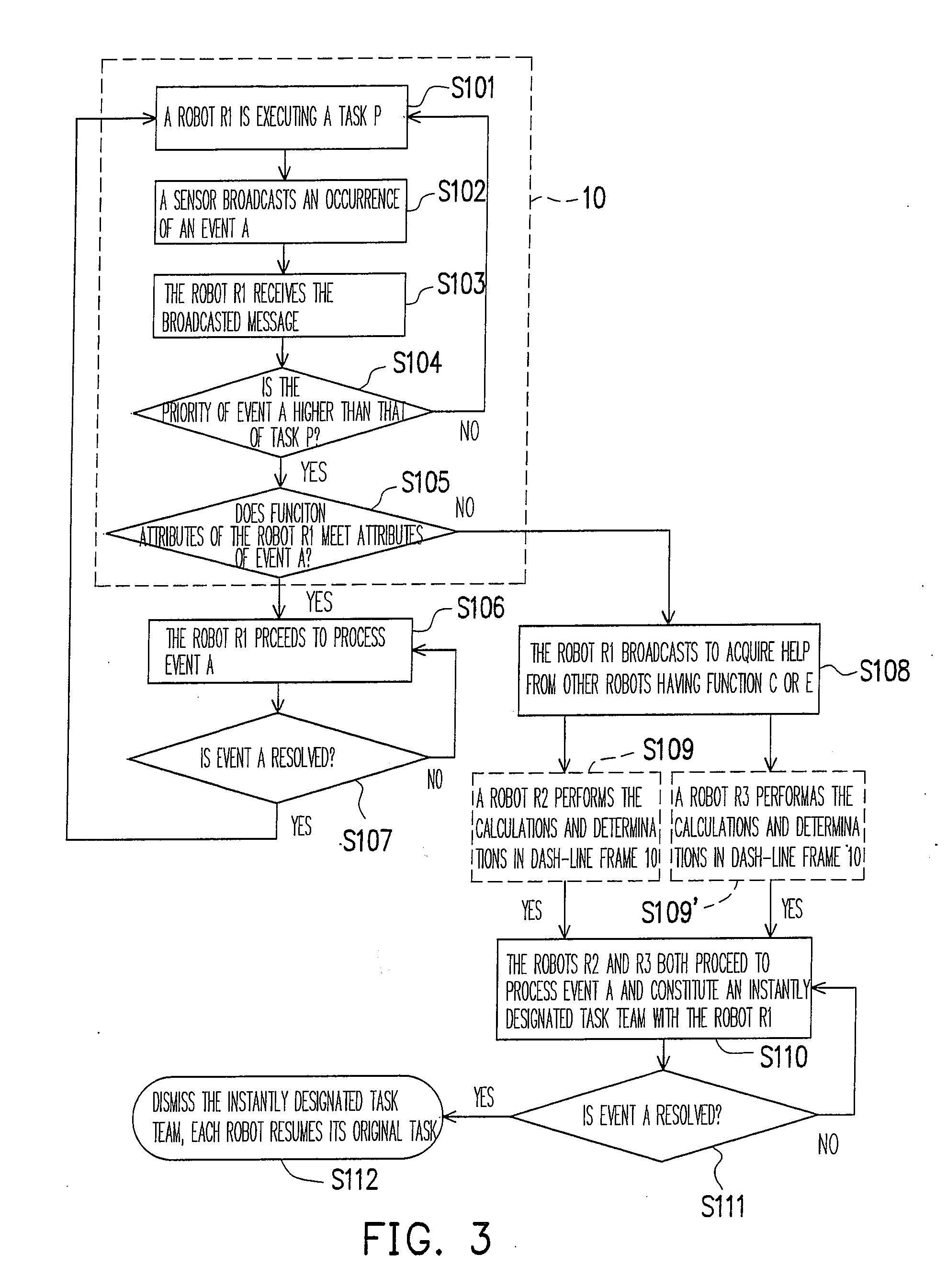Method for coordinating cooperative robots
a robot and cooperative technology, applied in the field of robots, to achieve the effect of avoiding task conflict, and increasing the weight of the abnormal even
- Summary
- Abstract
- Description
- Claims
- Application Information
AI Technical Summary
Benefits of technology
Problems solved by technology
Method used
Image
Examples
Embodiment Construction
[0016]Reference will now be made in detail to the present preferred embodiments of the invention, examples of which are illustrated in the accompanying drawings. Wherever possible, the same reference numbers are used in the drawings and the description to refer to the same or like parts.
[0017]FIG. 1 is a layout diagram of a plurality of cooperative robots which are executing a task according to an embodiment of the present invention. Referring to FIG. 1, a plurality of sensors 1, a main system 3 (optionally disposed), and a plurality of mobile robots (referred as robots thereinafter) 5 (R1-R6) are illustrated. The sensors 1 may be sensors having different functions used in a security system, such as image sensors, fire sensors, smoke sensors, infrared ray sensors, movement sensors, vibration sensors, gas sensors, human figure sensors, or the combinations thereof. The sensors 1 can be disposed at different locations in the surrounding environment or in the robots 5 for detecting an a...
PUM
 Login to View More
Login to View More Abstract
Description
Claims
Application Information
 Login to View More
Login to View More - R&D
- Intellectual Property
- Life Sciences
- Materials
- Tech Scout
- Unparalleled Data Quality
- Higher Quality Content
- 60% Fewer Hallucinations
Browse by: Latest US Patents, China's latest patents, Technical Efficacy Thesaurus, Application Domain, Technology Topic, Popular Technical Reports.
© 2025 PatSnap. All rights reserved.Legal|Privacy policy|Modern Slavery Act Transparency Statement|Sitemap|About US| Contact US: help@patsnap.com



